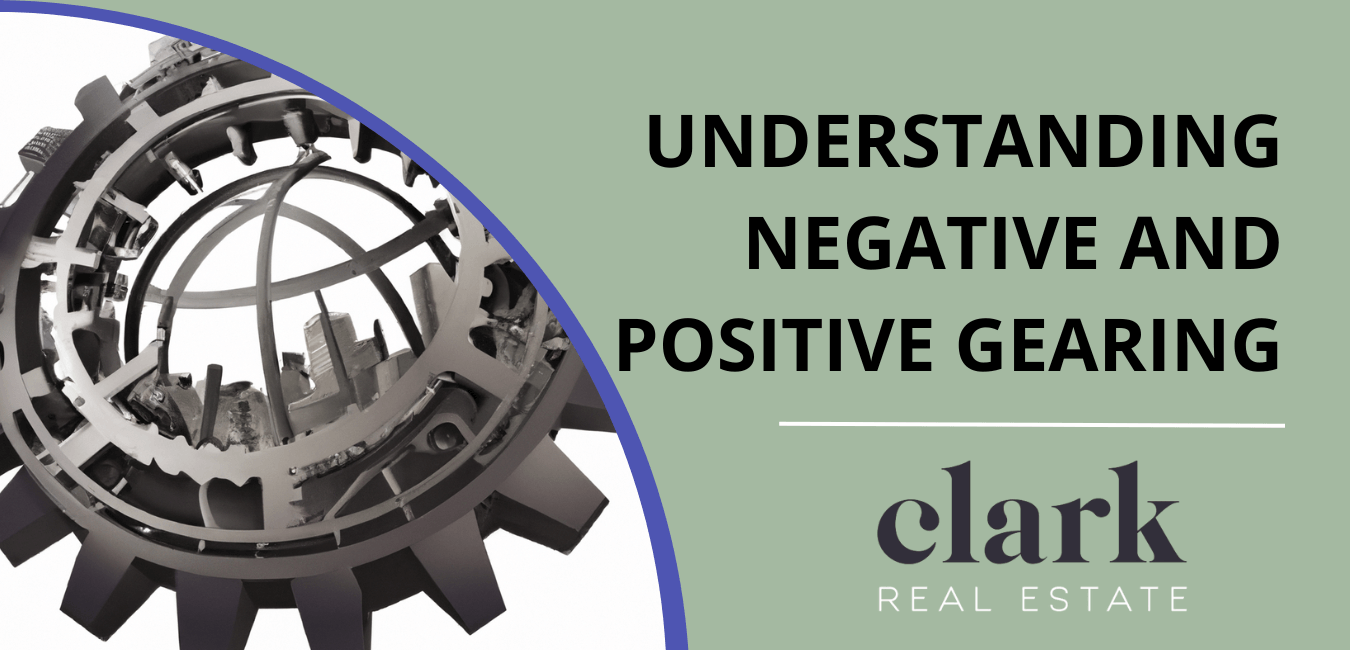
Get An Instant Online Appraisal HERE!
Get An Instant Online Rental Appraisal HERE!
Get A Full Suburb Report HERE!
Introduction
Real estate investment is a popular wealth-building strategy in Australia, offering both long-term stability and potential for lucrative returns. As an investor, understanding financial concepts like Negative Gearing and Positive Gearing is crucial for making informed decisions. In this guide, we’ll dive deep into both strategies and explore their implications in the Australian real estate market.
Negative Gearing and Positive Gearing are two different investment strategies that determine how your property’s rental income interacts with expenses and taxation. Let’s explore each one in detail:
Negative Gearing
Negative Gearing is a strategy where the expenses associated with owning an investment property, such as loan interest, maintenance costs, and property management fees, exceed the rental income generated. The result is a financial loss, which can be offset against other taxable income, like your salary. This loss reduces your overall tax liability, leading to potential tax savings.
The Mechanism of Negative Gearing
In a negative gearing scenario, the aim is not to generate immediate profit but to benefit from tax advantages and anticipate capital growth in the property’s value. Investors often rely on negative gearing to increase their property portfolios and take advantage of the tax deductions available.
Pros and Cons of Negative Gearing
Pros:
- Tax Benefits: Negative gearing allows investors to claim tax deductions on their property-related expenses, reducing their taxable income.
- Capital Growth Potential: Investors anticipate long-term capital appreciation, which can lead to substantial gains when selling the property in the future.
- Asset Accumulation: Investors can accumulate multiple properties, leveraging the benefits of negative gearing to build a diverse portfolio.
Cons:
- Cash Flow Risks: Reliance on potential capital growth means investors must manage negative cash flow in the short term, making it essential to have sufficient funds to cover expenses.
- Market Volatility: Capital growth is subject to market fluctuations, and investors should carefully research the market and choose their investments wisely.
Positive Gearing
Positive Gearing, on the other hand, is a strategy where the rental income generated from an investment property exceeds the expenses associated with it. In this scenario, the property generates a profit, which is considered taxable income.
The Mechanism of Positive Gearing
Positive gearing provides immediate cash flow and enables investors to earn profits from day one. This strategy is attractive for investors seeking regular income from their properties rather than relying on long-term capital appreciation.
Pros and Cons of Positive Gearing
Pros:
- Regular Income: Positive gearing ensures a steady stream of income from the rental property, which can help investors cover their expenses or reinvest in additional properties.
- Less Risky: Unlike negative gearing, positive gearing does not rely solely on capital growth, reducing exposure to market volatility.
- Loan Servicing: The rental income can be used to cover mortgage repayments, reducing financial strain.
Cons:
- Reduced Tax Benefits: As the property generates a profit, there are fewer tax deductions available compared to negative gearing.
- Limited Capital Growth: While positive gearing offers steady income, investors may miss out on potential windfalls from significant capital appreciation.
How to Use Negative Gearing and Positive Gearing in Australian Real Estate
Both negative gearing and positive gearing can be effective strategies when used correctly. The choice between the two depends on an investor’s financial goals, risk tolerance, and market conditions. Here’s how you can use them to your advantage:
1. Assessing Your Financial Goals
Before deciding on a gearing strategy, clarify your investment objectives. If you seek long-term wealth accumulation, negative gearing might be suitable, as it allows for potential capital growth. On the other hand, if you need immediate income, positive gearing could be a better fit.
2. Market Research
Conduct thorough market research to identify areas with strong rental demand and potential for capital growth. Positive gearing is more appealing in regions where rental yields are high, while negative gearing might be advantageous in areas with promising growth prospects.
3. Financial Analysis
Carefully analyze your financial situation, including your cash reserves and borrowing capacity. Negative gearing requires the ability to cover short-term losses, while positive gearing requires enough rental income to offset expenses.
4. Diversification
Consider diversifying your investment portfolio with a mix of negatively and positively geared properties. This approach can provide a balance between steady income and potential capital appreciation.
5. Seek Professional Advice
Consult with a qualified financial advisor or tax expert who specializes in real estate investment. They can help you understand the tax implications and choose the most suitable gearing strategy based on your individual circumstances.
FAQs
Q: Can I use both negative and positive gearing simultaneously?
Yes, you can. Many investors choose a combination of negatively and positively geared properties to create a balanced portfolio. This approach allows them to benefit from tax advantages while also enjoying steady rental income.
Q: Are there any risks associated with negative gearing?
Yes, negative gearing involves cash flow risks, especially if interest rates rise or rental income decreases. Investors must be prepared to cover the shortfall and manage potential financial strain.
Q: Can I negatively gear any type of property?
Yes, most investment properties are eligible for negative gearing. However, it’s essential to consider factors such as location, demand, and potential for capital growth.
Q: Is positive gearing always better than negative gearing?
Not necessarily. The choice between positive and negative gearing depends on your financial goals, risk appetite, and the state of the real estate market. Both strategies have their merits, and the optimal approach may vary for each investor.
Q: Can negative gearing help me reduce my overall tax liability significantly?
Yes, negative gearing can result in substantial tax savings, especially for high-income earners. However, the tax benefits depend on the property’s expenses and the investor’s taxable income.
Q: Are there any legal limitations on using negative gearing in Australia?
No, negative gearing is a legal and widely used investment strategy in Australia. However, tax laws and regulations may change, so it’s essential to stay updated with the latest developments.
Conclusion
In summary, both negative gearing and positive gearing are essential concepts for property investors in Australia. Each strategy offers distinct benefits and risks, catering to different investment objectives. When used strategically and in alignment with individual financial goals, these gearing strategies can prove valuable in building a successful real estate portfolio.

